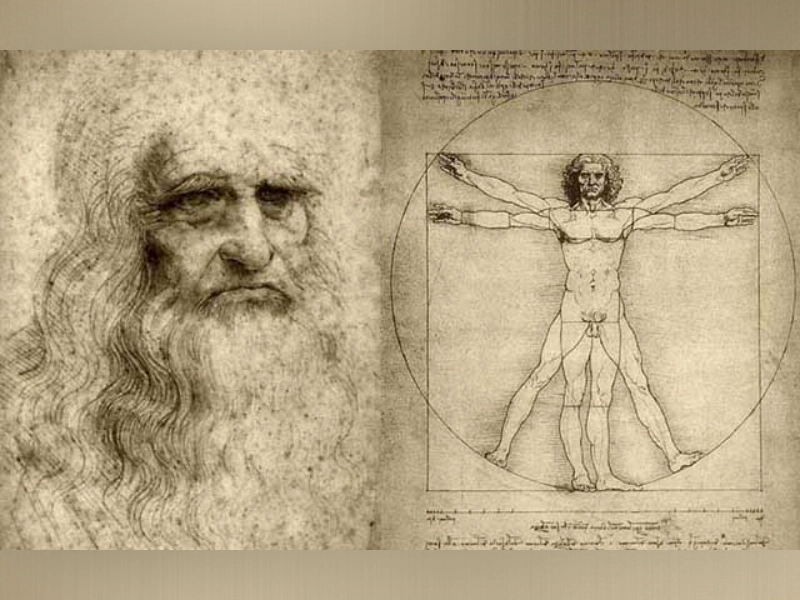The Golden Ratio: Nature's Hidden Perfect Number
Advertisement
4. The Golden Ratio in Art: Aesthetic Perfection

Advertisement
In the field of art, the golden ratio has long been admired as the secret to produce aesthetically appealing compositions. Using this mathematical proportion, either deliberately or instinctively, artists of past times have produced works that appeal to viewers on a deep, usually subconscious level. From historical paintings to contemporary graphic design, this section investigates how the golden ratio has affected many kinds of visual art.
In painting, harmonic compositions have been produced using the golden ratio. Leonardo da Vinci's "Mona Lisa" is among the most well-known instances; art historians have examined the picture and discovered that the woman's face's dimensions and feature arrangement quite closely match the golden ratio. Additionally seeming to follow golden ratio ideas is the general composition of the picture, including the horizon line's location and the subject inside the frame.
Another Renaissance painter, Sandro Botticelli, is thought to have used the golden ratio in his famous painting "The Birth of Venus." Venus's body proportions and placement within the composition match golden ratio calculations. Likewise, pointillist pioneer Georges Seurat deliberately applied the golden ratio in pieces like "A Sunday Afternoon on the Island of La Grande Jatte," so balancing and harmonising his intricate compositions.
Influence of the golden ratio goes beyond conventional painting. Beginning photographers should learn the basic rule of thirds, a condensed form of the golden ratio. To produce dynamic and aesthetically pleasing photographs, more sophisticated photographers frequently apply the golden ratio. Photographs that feel naturally balanced and interesting to the observer can be produced by photographers arranging important components of the picture along lines or at intersections decided upon by the golden ratio.
From website layouts to logo design, graphic artists regularly include the golden ratio into their work. For instance, Apple's logo is considered to be based on golden ratio proportions, which helps to explain its understated but striking design. The golden ratio is a common tool used in web design to establish the ratios of several components on a page, therefore producing visually beautiful layouts as well as practical ones.
Typography has also borrowed the golden ratio. Considered to improve readability and aesthetic appeal, several typefaces are made using golden ratio-based proportions. The golden ratio is frequently used in book and magazine page layouts to guide margins, column widths, and image placement, so establishing harmony and balance in the whole design.
In sculpting, pleasingly proportionate sculptures have been produced using the golden ratio. Thought to have employed this proportion in his works, the ancient Greek sculptor Phidias—after whom the symbol φ (phi) for the golden ratio is named—is Current sculptors keep investigating the golden ratio in their work to produce naturally harmonic and balanced objects.
The golden ratio is rather common even in abstract painting, where conventional ideas of beauty and proportion would seem less important. Using the golden ratio as a method to establish order and harmony within apparently chaotic or surreal settings, artists such as Piet Mondrian and Salvador Dalí have used it into their abstract compositions.
Using the golden ratio in art begs fascinating issues regarding our definition of aesthetics and the nature of beauty. Some contend that our inclination for the golden ratio is natural and maybe derived from its frequency in the surroundings. Others contend that our respect of it is culturally conditioned by millennia of exposure to art and building with this ratio.
Whichever its source, the golden ratio remains a useful instrument in the artist's toolkit. It offers a mathematical structure for designing compositions that the audience will find naturally "right". Strict adherence to the golden ratio is not required, nevertheless, to produce beautiful work. Many outstanding pieces of art deviate from golden ratio proportions, and creativity usually blossoms in challenging accepted wisdom.
In art, the golden ratio is a remarkable junction of mathematics and aesthetics. It emphasises the complexity of human perception and the fleeting character of what we deem visually appealing even while it reminds us that beauty can sometimes be expressed in mathematical terms. The golden ratio is evidence of the ongoing link between art and mathematics as creators keep investigating and playing about with it.
Advertisement
You May Like

